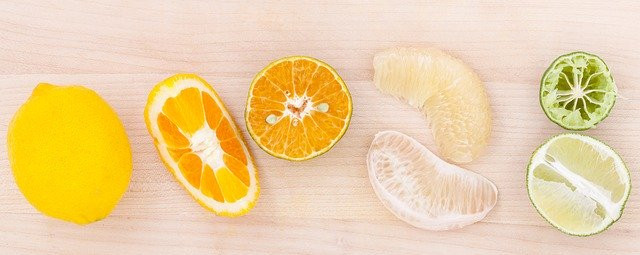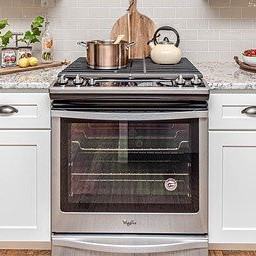Rethinking using harsh chemicals in your oven. Although some have a pleasant smell the fumes they give off are no less toxic. Come learn how to clean an oven without harsh chemicals.
There are alternative all natural cleaning methods for cleaning an oven. This one uses lemons as the key ingredient. The lemon acts a degreaser while the water added works as a steam cleaner.
There isn’t much difference compared to other natural cleaning methods. The biggest difference is the time and effort it takes to clean. Compared to using a pumice stick or baking soda and vinegar.
The vapors released from lemon juice and squeezed lemons combined with the steam released from water loosen up any grease, burned carbon, and dried food spills. How this all natural cleaning method works is rather simple.
Natural cleaning done right.
When life gives you lemons.

Believe it or not citrus fruit can be baked in the oven to act as a degreasing agent. It does not strictly apply to lemons but any citrus fruit of the like. When sliced and baked with water, both mix as a steam cleaning solution.
The water when baked acts as a steam cleaner. Without the lemons most leftover residues would remain unfazed due to grease. This steam cleaning solution is effective at loosening most buildup and leftover residue. The only con is that smoke vapors are still emitted from the oven while cleaning but nowhere near to self-cleaning options.
The heat from the oven does most of the work by mixing both vapors with heat. During the time in the oven (30 minutes to 1 hour) this cleaning solution will not break down grease and food residue; it simply loosens it up. The rest is up to you once the oven is cool enough to touch. If you want a different approach to this cleaning check out the post that inspired this one from WikiHow.Life how to clean an oven with lemon juice.
Cleaning an oven.
Using lemons to get it done.
Once cooled down the oven is at last ready to be cleaned. With the pollutants loosened go in for the kill by scrubbing away the solution and any residue that comes with it. I highly recommend keeping the leftover lemon water for this task.
For dried stubborn bits of food or burned carbon dampening a non metal scouring pad with lemon water works wonders. The lemons or whatever citrus fruit was used can be composted yay! Mother Nature’s highly efficient 100% biodegradable packaging.
Using this method there is no need to take the oven racks and clean them separately. The oven racks are cleaned the exact same way as the internal oven itself. Scrub away any and all loosened up grime then dry by wiping it down. The whole point isn’t to disinfect the oven, it’s to clean it. The high temperatures does the disinfecting for you.
For cleaning internally.
No need for self cleaning.
Most modern day ovens come with a self-cleaning option. And while it works it does emit a lot of smoke. However using lemons and water also does generate smoke into the kitchen but nowhere near as much as the self-cleaning option.
I highly recommend caution when checking to see if the oven is cool enough to clean, at least an hour or more. Use a non abrasive scouring pad to scrub away residues along with the cleaning solution. If there are any burned carbon stains dampened the scouring pad in the leftover lemon water.
Use a kitchen rag and wipe everything down. Make sure to dry off everything completely. This cleaning solution is non toxic and non flammable when utilized under the correct temperatures. Despite that it is better to be safe and ensure that the cleaning solution is wiped away along with any loosened residues.
Spotting when it’s time to clean.
The buildup carbon or odors is telling.
 When exactly should you clean your oven? It varies on different factors such as the frequency of use and what you make. However there are telltale signs you can look out for that indicate it is time for a cleaning.
When exactly should you clean your oven? It varies on different factors such as the frequency of use and what you make. However there are telltale signs you can look out for that indicate it is time for a cleaning.
Our eyes and nose help big time with this. Checking visually to spot buildup can indicate if it is time to clean. Checking using our sense of smell can also indicate if it’s time for a cleaning, if any unpleasant odors are being emitted from your oven it’s time. Regardless if the oven door is opened or closed, on or off. This kind of troubleshooting can help determine the cause so you can remedy the situation.
Making a schedule helps keep a dirty oven at bay. The more consistent you are with the cleaning the less time it will take per cleaning session. Why? Because there is less to clean. The more heavily soiled an oven is the more you will have to scrub and wipe away. I highly recommend sticking to the manual’s recommended guidelines for frequency of cleaning.
Ultimately having a schedule is up to preference. Though there is a reason why every oven manual has a use and care section. Aside from fire prevention, being consistent with cleaning helps prolong the life of your appliance.
This method over other natural methods.
The time it takes is quicker than others.
For an all natural cleaning solution the time it takes for proper application is 1 hour, less time than other all natural cleaning solutions. However the total amount of time is 2 hours plus. This is due to the fact that it takes about 1 hour of application, 1 hour for the oven to cool down and however long it takes you to finish the job.
The amount of effort needed will vary. Finishing the job can range from 15 minutes to 30 minutes, depending on the state of the oven. Just scrub and wipe until done.
The lemon peels used to make the cleaning solution can be composted. Mother nature has developed the world’s first and most efficient packing, 100% biodegradable. This is surprisingly the only cleaning method that does not require gloves. Yay less disposable waste! If you want to try another all natural method for an oven check out our post on how to clean an oven with baking soda and vinegar.
How to make the solution
What is needed for the task.
- Tools and Ingredients
- 2 Lemons
- Water
- Silicone or Hard Plastic Spatula/Scraper
- Non-Abrasive Scouring Pad
- Bowl
- Baking Sheet or Dish
- Spoon
- Oven Mitts
- Clean Kitchen Rags
- Measuring cup
- Measurements
- 3 Cups of Water
- Squeezed Lemon Juice
- Squeezed Lemon Carcass
- Time to clean
- 1 Hour For Cleaning With Oven On
- 1 Hour For Oven Cooling Down Or More
- 15-30 Minutes of Cleaning
- Total Approximately 2 hours and 30 minutes.
How to Clean Using This Method
- Preheat the oven at 250°F or 121°C (side note make sure you have proper ventilation).
- Cut the 2 lemons in half and squeeze out all the lemon juice using your hands or using a juicer onto the baking sheet. Mix in the 3 cups of water.
- Place the squeezed lemon carcasses with the lemon water. Then place in the oven to bake once it has preheated properly for 1 hour to make sure everything becomes loosened.
- Once done let the oven cool down for 1 hour so you clean it safely.
- Take out the baking sheet using your oven mittens lemon water and save it by pouring it carefully into a bowl or with a spoon.
- Start cleaning off the inside by scrubbing what you can using a non abrasive scouring pad.
- For pesky food or burned carbon bits dip the scouring pad in the leftover lemon water and scrub away. For any that resist the scouring pad and lemon water use the silicone/plastic spatula or scraper to scrap them away.
- Take your clean kitchen rags and begin to wipe away everything dry. Most of the loosened contaminants can be easily wiped away.
- Rid of the lemon water in your sink and you can compost the lemon peels. Yay no need to recycle another plastic bottle!
- Clean any tools you used and you are done.
Here is an alternative method of cleaning the oven using all natural methods.
Congratulations your oven should come out looking as clean as possible. Any unpleasant odors should be eliminated as well. If you found this helpful please leave a comment on how it helped and share! If you have any relevant comments or questions feel free to drop them below.


Oh, am I glad to have come across this information! I have bookmarked this so I can find it when ready to clean my oven. I hate the chemicals I have used, and I am sure they are totally toxic. I’m not too comfortable using such harsh chemicals in something we prepare our food in. This lemon solution is a great one.
Good to know another beneficial use of lemons. I use lemon juice and lemon flavoring a lot, especially since I eat a lot of fish. This use for lemons, though, is a new one on me. You have supplied a great solution to a problem I have, thanks!
That’s so splendid to hear Fran! Glad to have helped another kitchen stay clean through all natural means. Most cleaning chemicals are safe as long as the label is followed exactly.
This method is great because you get clean the oven rack and the oven at the same time. Most cleaning chemicals require the two to be cleaned separately with gloves on and safety googles.